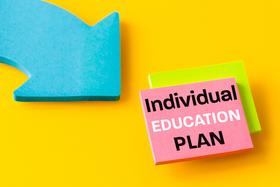For the 2025 school year, there is 1 public elementary school serving 218 students in Skyline Math And Science Academy School District. This district's average elementary testing ranking is 1/10, which is in the bottom 50% of public elementary schools in Minnesota.
Public Elementary School in Skyline Math And Science Academy School District have an average math proficiency score of 8% (versus the Minnesota public elementary school average of 47%), and reading proficiency score of 27% (versus the 51% statewide average).
Minority enrollment is 100% of the student body (majority Black), which is more than the Minnesota public elementary school average of 40% (majority Black and Hispanic).
Overview
This School District
This State (MN)
# Schools
1 School
1,675 Schools
# Students
218 Students
576,352 Students
# Teachers
7 Teachers
40,687 Teachers
Student : Teacher Ratio
31:1
31:1
District Rank
Skyline Math And Science Academy School District, which is ranked within the bottom 50% of all 527 school districts in Minnesota (based off of combined math and reading proficiency testing data) for the 2021-2022 school year.
Overall District Rank
#487 out of 527 school districts
(Bottom 50%)
(Bottom 50%)

Math Test Scores (% Proficient)
6-9%
45%

Reading/Language Arts Test Scores (% Proficient)
25-29%
51%

Science Test Scores (% Proficient)
10-14%
41%

Students by Ethnicity:
Diversity Score
0.00
0.61
# American Indian Students
n/a
10,513 Students
% American Indian Students
n/a
2%
# Asian Students
n/a
42,897 Students
% Asian Students
n/a
8%
# Hispanic Students
n/a
65,677 Students
% Hispanic Students
n/a
11%
# Black Students
218 Students
71,474 Students
% Black Students
100%
12%
# White Students
n/a
346,360 Students
% White Students
n/a
60%
# Hawaiian Students
n/a
680 Students
% Hawaiian Students
n/a
n/a
# Two or more races Students
n/a
38,751 Students
% of Two or more races Students
n/a
7%
Students by Grade:
# Students in PK Grade:
-
11,016
# Students in K Grade:
29
57,420
# Students in 1st Grade:
37
62,238
# Students in 2nd Grade:
36
63,933
# Students in 3rd Grade:
27
62,144
# Students in 4th Grade:
34
63,939
# Students in 5th Grade:
30
63,720
# Students in 6th Grade:
25
63,756
# Students in 7th Grade:
-
54,220
# Students in 8th Grade:
-
54,539
# Students in 9th Grade:
-
4,112
# Students in 10th Grade:
-
4,641
# Students in 11th Grade:
-
4,744
# Students in 12th Grade:
-
5,930
# Ungraded Students:
-
-
District Revenue and Spending
The revenue/student of $20,404 is higher than the state median of $17,744. The school district revenue/student has grown by 9% over four school years.
The school district's spending/student of $20,894 is higher than the state median of $18,465. The school district spending/student has grown by 9% over four school years.
Total Revenue
$4 MM
$15,547 MM

Spending
$5 MM
$16,179 MM

Revenue / Student
$20,404
$17,744

Spending / Student
$20,894
$18,465

Best Skyline Math And Science Academy School District Public Elementary Schools (2025)
School
(Math and Reading Proficiency)
(Math and Reading Proficiency)
Location
Grades
Students
Rank: #11.
Skyline Math And Science Academy
Charter School
(Math: 6-9% | Reading: 25-29%)
Rank:
Rank:
1/
Bottom 50%10
2600 26th Ave S Suite 100
Minneapolis, MN 55406
(612) 200-9916
Minneapolis, MN 55406
(612) 200-9916
Grades: K-6
| 188 students
Recent Articles

Demystifying IEPs
Unlock the power of Individualized Education Programs (IEPs) in this comprehensive guide. Discover how IEPs support students with diverse needs, including behavioral challenges. This article is a must-read for parents navigating the education system and aspiring teachers seeking to make a positive impact.

Unlocking Academic Excellence: A Guide to Advanced Placement (AP) Courses
Discover how AP courses empower students to pursue college-level studies, earn college credits, and stand out in the competitive admissions landscape.

December 16, 2024
Personalized Learning: Revolutionizing Education for the 21st CenturyExplore the revolutionary approach of Personalized Learning in K-12 education. This article discusses the benefits, challenges, and potential of tailoring education to individual student needs, incorporating technology and adaptive learning methods to prepare students for the 21st century.





